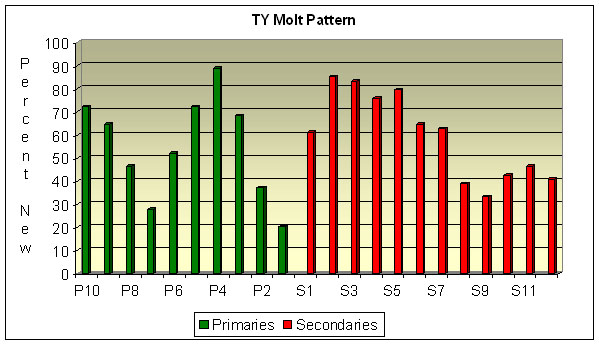At the beginning of the third prebasic molt, a Northern Saw-whet Owl will again almost simultaneously drop and regrow all of its rectices. When primary and secondary molt starts, most individuals will begin with some of the oldest retained feathers that were originally grown as a nestling, typically the central primaries and secondaries. They also replace some or all of the outer primaries that had been replaced during the previous prebasic molt.
Many owls molt all of the retained juvenal secondaries that were not replaced during the second prebasic molt, as well as inner secondaries that were replaced in the second prebasic molt. The innermost primaries (P1-2), P7 and the innermost secondaries are the wing feathers least likely to be replaced in the third prebasic molt. There is a significant amount of variability in which primary and secondary feathers saw-whet owls replace during the third prebasic, and a wide variety of patterns is observed. However, it is usually safe to assign ASY to any owl that possesses two generations of feathers that are not arranged in the typical SY pattern.
During the summer when saw-whet owls are going through their prebasic molt, any owl that exhibits three generations of primary and/or secondary feathers, i.e. very faded old feathers (2 years old), moderately faded feathers (1 year old) and newly grown in feathers should be assigned to the ASY (after-second-year) age class.
During autumn migration any owl that possesses two or more generations of feathers that are not the typical SY pattern can usually be safely assigned an age of ASY. Although less precise, it is also acceptable to assign after-hatching-year (AHY) to an owl possessing two generations of feathers regardless of the pattern.

